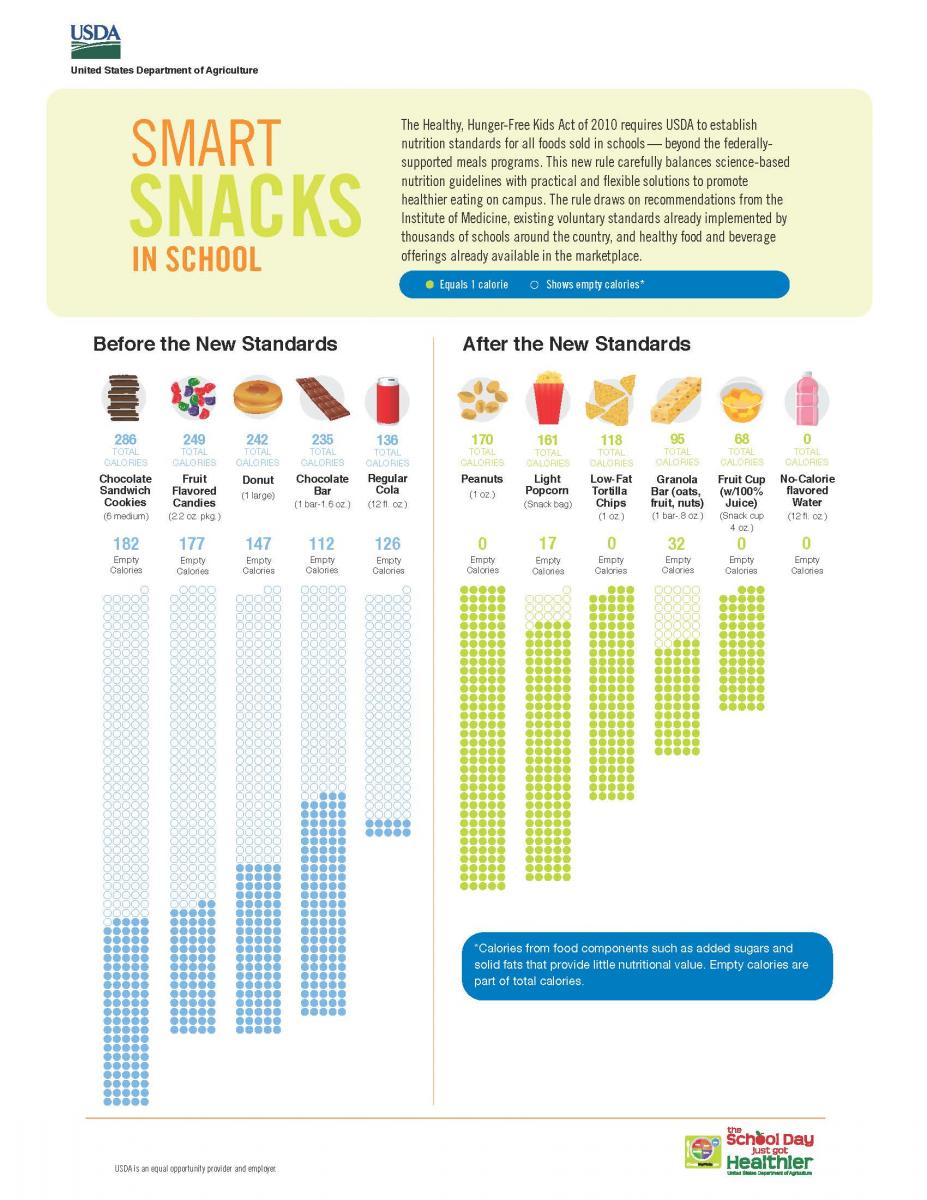Smart Snacks in School
By Kevin Concannon Communicator January 2015, Volume 38, Issue 5
By Kevin Concannon
Communicator
January 2015, Volume 38, Issue 5
Over the past few years, healthy changes have been unfolding in schools across America. Students across the country now receive healthier school breakfasts and lunches with an emphasis on fruits, vegetables and whole grains. This school year, the United States Department of Agriculture (USDA) has built on these advances with the Smart Snacks in School nutrition standards—science-based, common-sense standards for all snacks sold during the school day.
These new standards, required by the Healthy, Hunger-Free Kids Act of 2010, ensure that only healthy foods will be offered at all venues on school campuses, thereby improving the school nutrition environment for more than 50 million American students. When we developed these standards, we carefully balanced evidence-based nutrition science (including recommendations from the Institute of Medicine and the Dietary Guidelines for Americans) with feedback from nearly 250,000 parents, teachers, school food service professionals, and representatives of the food and beverage industry.
These standards complement healthier school meals and make healthy choices easier by promoting snacks that include whole grains, low-fat dairy, fruits, vegetables, or proteins as their main ingredients, and placing sensible limits on sugar, fat, and salt.
Some schools or communities may wish to set more stringent standards for snacks sold in schools, and we support that local discretion. We purposely set minimum standards to create a national baseline for schools and suppliers, allowing states, communities, and schools the flexibility to maintain their own policies beyond the baseline.
These new standards do not apply to foods sold outside of the school day, such as afterschool sporting events or weekend school plays. Schools still retain the flexibility to continue traditions like fundraisers and bake sales, and preserve parents’ ability to send in homemade lunches and birthday treats.
The Smart Snacks in School nutrition standards are the next step in USDA’s efforts to improve the health of America’s young people, but we know there is more work to be done. USDA and our partners are working hard to ensure that all children have access to affordable, nutritious food, so that America’s next generation of leaders grows up healthy and strong.
More information and resources are available here.
Kevin Concannon is Undersecretary for Food, Nutrition and Consumer Services at USDA.
Nutrition Standards for Foods
1. Any food sold in schools must:
- Be a “whole grain-rich” grain product; or
- Have as the first ingredient a fruit, a vegetable, a dairy product or a protein food; or
- Be a combination food that contains at least a quarter of a cup of fruit and/or vegetable; or
- Contain 10 percent of the Daily Value of one of the nutrients of public health concern in the 2010 Dietary Guidelines for Americans (calcium, potassium, vitamin D, or dietary fiber).*
2. Foods must also meet several nutrient requirements:
- Calorie limits:
- Snack items: Less than or equal to 200 calories
- Entrée items: Less than or equal to 350 calories
- Sodium limits:
- Snack items: Less than or equal to 230 mg**
- Entrée items: Less than or equal to 480 mg
- Fat limits:
- Total fat: Less than or equal to 35 percent of calories
- Saturated fat: Less than 10 percent of calories
- Trans fat: zero grams
- Sugar limit: Less than or equal to 35 percent of weight from total sugars in foods
Nutrition Standards for Beverages
1. All schools may sell:
- Plain water (with or without carbonation)
- Unflavored low fat milk
- Unflavored or flavored fat free milk and milk alternatives permitted by NSLP/SBP
- 100 percent fruit or vegetable juice and
- 100 percent fruit or vegetable juice diluted with water (with or without carbonation), and no added sweeteners.
2. Elementary schools may sell up to 8-ounce portions, while middle schools and high schools may sell up to 12-ounce portions of milk and juice. There is no portion size limit for plain water.
Other Requirements
1. Fundraisers
- The sale of food items that meet nutrition requirements at fundraisers are not limited in any way under the standards.
- The standards do not apply during non-school hours, on weekends, and at off-campus fundraising events.
- The standards provide a special exemption for infrequent fundraisers that do not meet the nutrition standards. State agencies determine the frequency with which fundraising activities take place that allow the sale of food and beverage items that do not meet the nutrition standards.
2. Accompaniments: Accompaniments such as cream cheese, salad dressing, and butter must be included in the nutrient profile as part of the food item sold. This helps control the amount of calories, fat, sugar and sodium added to foods by accompaniments, which can be significant.
*On July 1, 2016, foods may not qualify using the 10 percent of the Daily Value criteria.
**On July 1, 2016, snack items must contain less than or equal to 200 mg sodium per item

